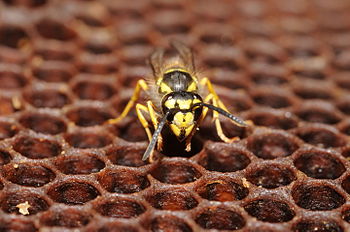
Aesthetics of nature is a sub-field of philosophical ethics, and refers to the study of natural objects from their aesthetical perspective.

Aesthetics of nature is a sub-field of philosophical ethics, and refers to the study of natural objects from their aesthetical perspective.
Aesthetics of nature developed as a sub-field of philosophical ethics. In the 18th and 19th century, the aesthetics of nature advanced the concepts of disinterestedness, the pictures, and the introduction of the idea of positive aesthetics. [1] The first major developments of nature occurred in the 18th century. The concept of disinterestedness had been explained by many thinkers. Anthony Ashley-Cooper introduced the concept as a way of characterizing the notion of the aesthetic, later magnified by Francis Hutcheson, who expanded it to exclude personal and utilitarianism interests and associations of a more general nature from aesthetic experience. [2] This concept was further developed by Archibald Alison who referred it to a particular state of mind. [2]
The theory of disinterestedness opened doors for a better understanding of the aesthetics dimensions of nature in terms of three conceptualizations:
Objects experienced as beautiful tend to be small, smooth, and fair in color. [3] : 17–18 In contrast, objects viewed as sublime tend to be powerful, intense and terrifying. Picturesque items are a mixture of both, which can be seen as varied and irregular, rich and forceful, and even vibrant. [3] : 17–18
Cognitive and non-cognitive approaches of nature have directed their focus from natural environments to the consideration of human and human-influenced environments and developed aesthetic investigations of everyday life. (Carlson and Lintott, 2007; Parsons 2008a; Carlson 2010) [4]

People may be mistaken by the art object analogy. For instance, a sandhill crane is not an art object; an art object is not a sandhill crane. In fact, an art object should be called an artifact. [5] The crane is wildlife on its own and is not an art object. This can be related to Saito's definition of the cognitive view. In elaboration, the crane lives through various ecosystems such as Yellowstone. Nature is a living system which includes animals, plants, and Eco-systems. In contrast, an art object has no regeneration, evolutionary history, or metabolism. [6] An individual may be in the forest and perceive it as beautiful because of the plethora of colors such as red, green, and yellow. This is a result of the chemicals interacting with chlorophyll. [7] An individual's aesthetic experience may increase; however, none of the things mentioned have anything to do with what is really going on in the forest. The chlorophyll is capturing solar energy and the residual chemicals protect the trees from insect grazing. [7]
Any color perceived by human visitors for a few hours is entirely different from what is really happening. [7] According to Leopold, the three features of ecosystems that generate land ethic are integrity, stability and beauty. [7] None of the mentioned features are real in nature. Ecosystems are not stable: they are dramatically changing and they have little integration; ergo, beauty is in the eye of the beholder. [7]
Euclidean human-made space can be altered by integrating the aesthetics of nature. [8] Fractal patterns offer the chance to enhance man-made spaces by introducing visually soothing natural designs. Research indicates a preference for specific fractal complexities that resemble nature's patterns. Three experiments explored various fractal designs, revealing that viewers' perceptions of pattern complexity and engagement increase with the fractal's complexity. These perceptions remained consistent across different designs, methodologies, and cultural backgrounds.
In a Post-Modern approach, when an individual engages in aesthetically appreciating a natural thing, we give meaning to the thing we appreciate and in that meaning, we express and develop our own attitudes, values and beliefs. [9] Our interest in natural things are not only a passive reflection of our inclinations, as Croce describes as the appreciation of nature as looking in a mirror, or what we might call our inward life; but may instead be the things we come across in nature that engage and stimulate our imagination. [9] As a result, we are challenged to think differently and apply thoughts and associations to in new situations and ways. [9]
As a characterization of the appreciation of art, nature aestheticists argue that post modernism is a mistaken view because we do not have a case of anything goes. The aesthetics appreciation of art is governed by some normative standards. [9] In the world of art, criticism may take place when people come together and discuss books and films or critics write appraisals for publications. On the contrary, there are not obvious instances of debate and appraisals where different judgments about the aesthetics of character of nature are evaluated. [9]
Aesthetics is the branch of philosophy concerned with the nature of beauty and the nature of taste; and functions as the philosophy of art. Aesthetics examines the philosophy of aesthetic value, which is determined by critical judgements of artistic taste; thus, the function of aesthetics is the "critical reflection on art, culture and nature".

In mathematics, a fractal is a geometric shape containing detailed structure at arbitrarily small scales, usually having a fractal dimension strictly exceeding the topological dimension. Many fractals appear similar at various scales, as illustrated in successive magnifications of the Mandelbrot set. This exhibition of similar patterns at increasingly smaller scales is called self-similarity, also known as expanding symmetry or unfolding symmetry; if this replication is exactly the same at every scale, as in the Menger sponge, the shape is called affine self-similar. Fractal geometry lies within the mathematical branch of measure theory.

Fractal art is a form of algorithmic art created by calculating fractal objects and representing the calculation results as still digital images, animations, and media. Fractal art developed from the mid-1980s onwards. It is a genre of computer art and digital art which are part of new media art. The mathematical beauty of fractals lies at the intersection of generative art and computer art. They combine to produce a type of abstract art.

A pattern is a regularity in the world, in human-made design, or in abstract ideas. As such, the elements of a pattern repeat in a predictable manner. A geometric pattern is a kind of pattern formed of geometric shapes and typically repeated like a wallpaper design.

In traditional Japanese aesthetics, wabi-sabi (侘寂) is a world view centered on the acceptance of transience and imperfection. The aesthetic is sometimes described as one of appreciating beauty that is "imperfect, impermanent, and incomplete" in nature. It is prevalent in many forms of Japanese art.
The language of thought hypothesis (LOTH), sometimes known as thought ordered mental expression (TOME), is a view in linguistics, philosophy of mind and cognitive science, forwarded by American philosopher Jerry Fodor. It describes the nature of thought as possessing "language-like" or compositional structure. On this view, simple concepts combine in systematic ways to build thoughts. In its most basic form, the theory states that thought, like language, has syntax.

In aesthetics, the sublime is the quality of greatness, whether physical, moral, intellectual, metaphysical, aesthetic, spiritual, or artistic. The term especially refers to a greatness beyond all possibility of calculation, measurement, or imitation.

Japanese aesthetics comprise a set of ancient ideals that include wabi, sabi, and yūgen. These ideals, and others, underpin much of Japanese cultural and aesthetic norms on what is considered tasteful or beautiful. Thus, while seen as a philosophy in Western societies, the concept of aesthetics in Japan is seen as an integral part of daily life. Japanese aesthetics now encompass a variety of ideals; some of these are traditional while others are modern and sometimes influenced by other cultures.
This is a history of aesthetics.
The psychology of art is the scientific study of cognitive and emotional processes precipitated by the sensory perception of aesthetic artefacts, such as viewing a painting or touching a sculpture. It is an emerging multidisciplinary field of inquiry, closely related to the psychology of aesthetics, including neuroaesthetics.
Four Dissertations is a collection of four essays by the 18th-century Scottish Enlightenment philosopher David Hume, first published in 1757. The four essays are:
Applied aesthetics is the application of the branch of philosophy of aesthetics to cultural constructs. In a variety of fields, artifacts are created that have both practical functionality and aesthetic affectation. In some cases, aesthetics is primary, and in others, functionality is primary. At best, the two needs are synergistic, in which "beauty" makes an artifact work better, or in which more functional artifacts are appreciated as aesthetically pleasing. This achievement of form and function, of art and science, of beauty and usefulness, is the primary goal of design, in all of its domains.

Mathematical beauty is the aesthetic pleasure derived from the abstractness, purity, simplicity, depth or orderliness of mathematics. Mathematicians may express this pleasure by describing mathematics as beautiful or describe mathematics as an art form, or, at a minimum, as a creative activity.
In psychology of art, the relationship between art and emotion has newly been the subject of extensive study thanks to the intervention of esteemed art historian Alexander Nemerov. Emotional or aesthetic responses to art have previously been viewed as basic stimulus response, but new theories and research have suggested that these experiences are more complex and able to be studied experimentally. Emotional responses are often regarded as the keystone to experiencing art, and the creation of an emotional experience has been argued as the purpose of artistic expression. Research has shown that the neurological underpinnings of perceiving art differ from those used in standard object recognition. Instead, brain regions involved in the experience of emotion and goal setting show activation when viewing art.
A theory of art is intended to contrast with a definition of art. Traditionally, definitions are composed of necessary and sufficient conditions and a single counterexample overthrows such a definition. Theorizing about art, on the other hand, is analogous to a theory of a natural phenomenon like gravity. In fact, the intent behind a theory of art is to treat art as a natural phenomenon that should be investigated like any other. The question of whether one can speak of a theory of art without employing a concept of art is also discussed below.
Experimental aesthetics is a field of psychology founded by Gustav Theodor Fechner in the 19th century. According to Fechner, aesthetics is an experiential perception which is empirically comprehensible in light of the characteristics of the subject undergoing the experience and those of the object. Experimental aesthetics is the second oldest research area in psychology, psychophysics being the only field which is older. In his central work Introduction to Aesthetics Fechner describes his empirical approach extensively and in detail. Experimental aesthetics is characterized by a subject-based, inductive approach.

The values that a person holds may be personal or political depending on whether they are considered in relation to the individual or to society. Apart from moral virtue, examples of personal values include friendship, knowledge, beauty etc. and examples of political values, justice, equality and liberty. This article will outline some current ideas relating to the first group – personal values. It will begin by looking at the kinds of thing that have value and finish with a look at some of the theories that attempt to describe what value is. Reference will be made solely to Western sources although it is recognised that many, if not all, of the values discussed may be universal.

Ancient aesthetics refers to the perception of beauty and form in the ancient world and the importance it was given in many ancient cultures.

Biophilic design is a concept used within the building industry to increase occupant connectivity to the natural environment through the use of direct nature, indirect nature, and space and place conditions. Used at both the building and city-scale, it is argued that this idea has health, environmental, and economic benefits for building occupants and urban environments, with few drawbacks. Although its name was coined in recent history, indicators of biophilic design have been seen in architecture from as far back as the Hanging Gardens of Babylon.
Absolutism, in aesthetics, is a term applied to several theories of aesthetics with the same inherent approach. This being that beauty is an objective attribute of things, and not merely a subjective feeling of pleasure to the one who perceives it. It follows from this that there is an absolute standard of the beautiful by which all objects can be judged. The fact that, in practice, the judgments even of connoisseurs are perpetually at variance, and that the so-called criteria of one place or period are more or less opposed to those of all others, is explained by the hypothesis that individuals are differently gifted in respect of the capacity to appreciate.